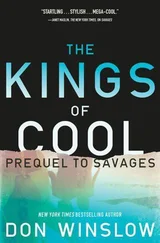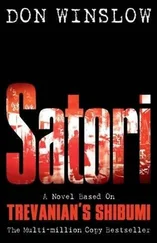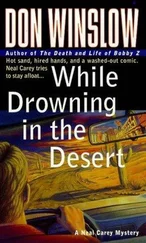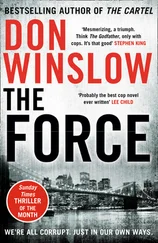Don Winslow - California Fire And Life
Здесь есть возможность читать онлайн «Don Winslow - California Fire And Life» весь текст электронной книги совершенно бесплатно (целиком полную версию без сокращений). В некоторых случаях можно слушать аудио, скачать через торрент в формате fb2 и присутствует краткое содержание. Жанр: Триллер, на английском языке. Описание произведения, (предисловие) а так же отзывы посетителей доступны на портале библиотеки ЛибКат.
- Название:California Fire And Life
- Автор:
- Жанр:
- Год:неизвестен
- ISBN:нет данных
- Рейтинг книги:4 / 5. Голосов: 1
-
Избранное:Добавить в избранное
- Отзывы:
-
Ваша оценка:
- 80
- 1
- 2
- 3
- 4
- 5
California Fire And Life: краткое содержание, описание и аннотация
Предлагаем к чтению аннотацию, описание, краткое содержание или предисловие (зависит от того, что написал сам автор книги «California Fire And Life»). Если вы не нашли необходимую информацию о книге — напишите в комментариях, мы постараемся отыскать её.
California Fire And Life — читать онлайн бесплатно полную книгу (весь текст) целиком
Ниже представлен текст книги, разбитый по страницам. Система сохранения места последней прочитанной страницы, позволяет с удобством читать онлайн бесплатно книгу «California Fire And Life», без необходимости каждый раз заново искать на чём Вы остановились. Поставьте закладку, и сможете в любой момент перейти на страницу, на которой закончили чтение.
Интервал:
Закладка:
So Jack's looking at this hole in the flooring — about two feet long and a foot wide — where the fire burned through and he's wondering why. He shines his light into the hole and onto the floor joist. The top of the joist directly beneath the hole is charred. The bottom looks unaffected. Jack leans over and shines the light onto the joist just beyond the hole.
Sees what he expects to see: finger-shaped stains on the top part of the joist.
"Note splatter pattern on joist beneath hole in closet flooring," he says into the tape.
That's all. He doesn't say that this is what you'd expect to see in an accelerated fire — the splatter pattern where the poured accelerant has seeped through the flooring and along and into the joist.
Fucking Bentley, Jack thinks. Lazy fucking Bentley. Sees his point of origin, brushes some ash aside, and pronounces cause and origin. Gets the poles out and goes fishing.
Doesn't bother to look, doesn't bother to do a dig-out.
You have to dig out the char before you can determine the cause of the fire. At least this is what Jack was always taught. You have to do a dig-out. And not just where you think the point of origin is, but over the whole structure.
See, it's hard to burn a house.
Most people think that it's easy, but most people are wrong. A fire needs a lot of oxygen and a lot of fuel to get big and grow strong, and in a lot of house fires, there just isn't the oxygen or the fuel load to sustain a real hummer of a fire. Arson fires that Jack has worked, he goes in and finds holes punched in the walls to vent the fire, or windows left open. He once investigated a fire in a house that was under construction, and they'd taken the frigging drywall out so that the fire would have enough oxygen to spread through the house.
And it isn't just a matter of oxygen and fuel load — it's a matter of time.
Time before the fire trucks roll in.
In the old days it was different — the country was more rural, houses were farther away from the fire stations, nobody had automatic alarms and sprinkler systems and all that happy crap.
But now — especially in the Southern California megalopolis — everything is wired. Everybody's hooked in. A fire goes off, it trips the sprinkler system, it trips the security alarm, the Fire Department is at most ten minutes away and firefighters arrive in force.
You want to burn a structure down — or burn out a wing of your house — you're in a game of Beat the Clock. You start the fire in just one spot, you're bound to lose that game. The unrelenting math of physics is just against you.
You have to reset the math.
You do it two ways.
First, you accelerate the fire. You generally take some fossil fuel and ignite a fire that's more hare than tortoise. The other thing you do is you set more than one fire. An arson fire is usually not a single fire but several fires, because it has more than one point of origin. You need more than one because even a highly accelerated single fire is not going to do the damage you need before it runs out of clock.
You need several accelerated fires to (a) get to the areas you want destroyed and (b) to increase the total amount of BTUs to get your convection effect working for you. Get enough heat going in the structure so that the flames don't necessarily have to spread the fire — the heat will reach the ignition point of the materials in the structure and then WHOOSH.
Flashover phase.
The fire out of control.
The alligator in a feeding frenzy.
Orgasm, as Fuller would have put it.
Of course, Jack knows that the convection effect doesn't always happen that way. A guy sets two or three fires and one or two of them die out before they get the necessary heat going. So what a lot of arsonists will do is connect the fires so the flames move through the structure. So they pour accelerant from one place to the other, or sometimes they make what's known in the business as "trailers," often bed-sheets twisted up and run through the house from pool of accelerant to pool of accelerant.
A little highway for the fire to get up some speed.
And the evidence burns itself up.
Unless you speak fire, in which case the evidence is there — like a hole in the flooring and a splatter pattern on the joists.
Showing that the fire burned down instead of up.
Physics, Jack thinks, never lies.
The laws of nature are laws that even plaintiff attorneys and judges can't overrule. You throw a ball up in the air, it comes down. You get under a wave, it rolls you on the bottom. Fire ignites and burns up unless it has a physical reason to burn down.
Jack kneels there, sweating inside his white paper overalls, the smell of ash penetrating his sinuses, and part of him wishes he were out in the cold blue water under a cool blue sky instead of knee-deep in ash in a closed black room that smells like fire and death.
He goes through the whole photography process again, lighting and shooting the V-pattern, the hole, the joist, and the closet as a whole. In color and black-and-white. Records the information on his notes and into the microphone.
When he's done with all that, he takes out a plastic evidence bag from the overalls. Some guys like to use paint cans, but Jack worries that the metal in the cans could contaminate the samples. Likewise, your basic grocery store Ziploc bags. So Jack buys special evidence bags which have been treated and sterilized. They're more expensive, but he figures that in the long run they're a lot cheaper than having your samples kicked out of court. He scoops some char out of the hole and places it in the bag. Seals the bag and then labels it, giving the date, time, description, and exact location where the sample was taken. Then he signs the label.
He records the same information into his notebook and speaks it into the tape recorder.
Jack being a belt-and-suspenders kind of guy.
He repeats this process several more times, taking a small chunk of the joist, the flooring itself, and then a char sample from a different part of the closet, away from the V-pattern and the hole. He takes material from an area he thinks will be clean in order to get a comparison sample, hopefully one that doesn't contain an accelerant. Otherwise, if the samples do test positive for accelerants, the argument can be made that they're inherent in the wood itself. Pine flooring, for example, can have a lot of turpentine in it. So you try to get a "clean" sample to show the difference.
He takes samples from several locations around the room.
I'm going to have to do a dig-out, Jack thinks.
The whole room.
Literally dig out all the char in the room to expose the flooring to see holes, potential pour patterns, spalling on the concrete slab below the floor — all "indicia," as they say in the trade, of an accelerated fire.
He picks up his shovel and starts to dig.
Beginning in the closet. Figures he'll start in that corner, where he knows that there's a problem, and then work his way out across the whole bedroom. He scoops up char and tosses it into one of the large plastic garbage cans he brought with him. He'll need the char later when he goes to do the sift.
As he digs he sometimes scoops up larger pieces of material — partially burned clothing, pieces of appliances, remnants of furniture. He sets aside the larger pieces — some brass cabinet handles, copper hasps, a claw handle foot — but records all of them in his notes. He sketches the location of the larger pieces on his floor plan, photographs them, and puts them into plastic evidence bags.
All of this takes time.
When he's done digging out the open floor space, he's exposed what's left of the flooring.
Stands back and takes a look and the fire is really talking.
The pour pattern that starts in the closet leads to the bed.
Читать дальшеИнтервал:
Закладка:
Похожие книги на «California Fire And Life»
Представляем Вашему вниманию похожие книги на «California Fire And Life» списком для выбора. Мы отобрали схожую по названию и смыслу литературу в надежде предоставить читателям больше вариантов отыскать новые, интересные, ещё непрочитанные произведения.
Обсуждение, отзывы о книге «California Fire And Life» и просто собственные мнения читателей. Оставьте ваши комментарии, напишите, что Вы думаете о произведении, его смысле или главных героях. Укажите что конкретно понравилось, а что нет, и почему Вы так считаете.












